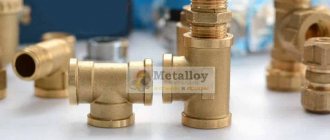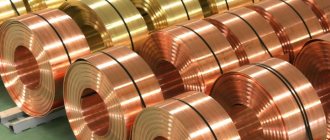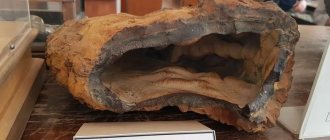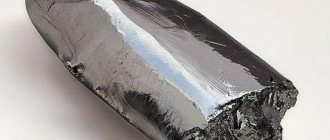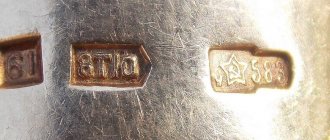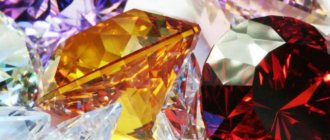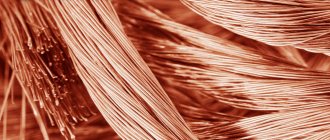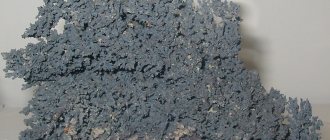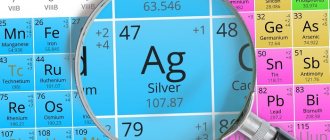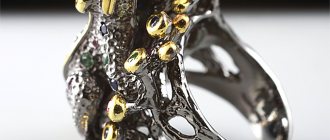Brass, which is well known and has been actively used for many years, is an alloy of copper and zinc. The inventor of this material with a number of unique characteristics is considered to be the Englishman James Emerson, who patented it in 1781.
Brass metal products have good corrosion resistance and high strength
Classification of brasses
Depending on the chemical composition there are:
- Simple (two-component) brass. They contain only copper and zinc. Simple brass is marked with the letter “L” and a number that indicates the percentage of copper. For example: L85 contains 85% copper and 15% zinc.
- Special (multi-component) brass. They contain copper, zinc, lead, aluminum, iron and other elements that improve the basic properties of the material. Such elements are called alloying elements. Special brass is marked with the letter “L”, as well as letters and numbers indicating additional alloying elements and their percentage. For example: LA77-2 contains 77% copper, 2% aluminum and 21% zinc.
Special brasses are divided into classes named after the main alloying element (manganese, aluminum, silicon, tin, nickel, lead).
According to the degree of processing of brass there are:
• deformable (brass tape, wire, pipe, brass sheet); • foundry (fittings, bearings, instrument parts).
Read more about brass alloys
Brass L63, Brass LS59-1
There is also a classification based on the amount of zinc in the alloy:
• 5-20% zinc – red brass (tompak); • 20-36% zinc – yellow brass.
How to properly care
Under the influence of the external environment, brass becomes dull, losing its decorative qualities and brightness. To maintain the beauty and shine of the material, you need to properly and regularly care for it. Let's look at the main cleaning methods.
What is forbidden to wash
During production, copper alloy products are protected with a special coating. It is easy to damage a thin layer with sandpaper. Even the finest grain of abrasive material can scratch or completely remove the upper protective tier.
Prohibited means Source market.yandex.ru
To clean brass products, it is prohibited to use vinegar and acid-based products. The aggressive substance destroys the zinc in the alloy. As a result of dezincification, the metal acquires a poisonous red color.
Basic properties of brass
Brass lends itself well to pressure processing. Mechanical properties are relatively high, corrosion resistance is satisfactory. If we compare brass with bronze, then their strength, corrosion resistance and anti-friction properties are less. They are not very stable in air, in salt sea water, carbon dioxide solutions and solutions of many organic acids.
Brass has a beautiful color and, compared to copper, has better corrosion resistance. However, as the temperature increases, the corrosion rate also increases. This process is most noticeable in thin-walled products. Corrosion can be provoked by: humidity, traces of ammonia and sulfur dioxide in the air. To prevent this phenomenon, brass products are subjected to low-temperature firing after processing.
Almost all brasses, when the temperature drops (to helium temperatures), remain ductile and do not become brittle, which makes it possible to use them as a good structural material. Due to the higher recrystallization temperature (300-370°C) than copper, the creep of brasses at high temperatures will be less. At average temperatures (200-600°C), the phenomenon of brittleness occurs, since impurities insoluble at low temperatures (for example: lead, bismuth) form brittle intercrystalline layers. As the temperature increases, the impact strength of brass decreases. Compared to copper, the electrical conductivity and thermal conductivity of brass is lower.
Physicochemical characteristics
Brass has a yellow-golden hue, due to which the material is often used in the manufacture of artistic jewelry. The material is characterized by high ductility, corrosion resistance and anti-friction characteristics. Physical properties allow for polishing, forging, gas and arc welding, and plastic deformation of metal.
The melting point depends on the percentage of zinc content: as it increases, the melting point decreases. On average it is 880-940 degrees Celsius. In the open air, the surface of brass oxidizes and darkens, so it is often treated with a special protective varnish.
Products made of brass differ in their chemical properties from objects made of other metals. Resistance to oxidation and corrosion is much higher than that of copper, but the latter has better electrical and thermal conductivity. Brass alloys are easier to process, but they are inferior in strength to, for example, bronze products.
Let's look at how alloying elements affect the properties of brass.
- Tin significantly increases the anti-corrosion properties in sea water and increases the strength of the alloy. Brass with tin is often called marine brass.
- Manganese increases strength and corrosion resistance. Manganese brasses are often combined with tin, iron and aluminum.
- Nickel improves corrosion properties and strength in various environments.
- Silicon reduces strength and hardness and also improves weldability. Brasses containing silicon and lead have good anti-friction properties. Such alloys can replace more expensive ones, such as tin bronze.
- Lead significantly improves machinability, but at the same time degrades mechanical properties. Lead brass is called automatic, since it is processed on automatic machines. This alloy is the most common.
- Aluminum reduces the volatility of zinc due to the formation of a protective film (aluminum oxide) on the surface of molten brass.
The special role of brass composition
Brass can look like bronze if the compositions and proportions are chosen correctly and the surface of the brass is treated. Today, due to their lower cost, copper-zinc alloys have begun to gain positions in the market. Once popular bronze chandeliers, sconces, decorative items and faucets are now increasingly made of brass.
And so that external differences in the alloys cannot be discerned, the surface of the brass is subjected to a special chemical composition. This is how they make plumbing brass.
The conquest of the decorative metals market does not end there. Now brass is a material for headboards, candlesticks, kitchen hoods and utensils, and other interior elements. It is not for nothing that alloys received the status of the most important metals in the world. And even typographic fonts are brass.
Methods of obtaining
The technology for producing brass involves the processes of the copper and zinc industries, as well as the processing of recyclable materials. The raw materials for the production of alloys are blanks of copper, zinc and other metals for the production of multicomponent alloys. We also use our own production waste and secondary raw materials. All blanks are manufactured in accordance with GOST.
For smelting brass, various types of smelting furnaces are used, which are used for smelting copper alloys. The most effective are electric induction low-frequency furnaces with a magnetic core. Melting is carried out under exhaust ventilation, since some elements of the alloy evaporate intensely and can harm human health. It is undesirable to overheat the alloy, due to the likelihood of some components igniting in air. Pure and recycled metals are used as charges for smelting brass.
The raw materials are first prepared and the ovens are cleaned. Copper heated to red heat is placed in a furnace, and then lumps of zinc are added. When melting copper-zinc alloys, the significant oxidation of zinc is taken into account. To reduce oxidation, a number of measures are carried out. To make multi-component alloys, copper is added first, followed by the remaining components carefully.
The homogeneous mass is poured into molds to produce foundry brass. The result is flat and round ingots. After casting, wrought alloys undergo a deformation procedure. The resulting products differ in the degree of hardening and aging, as well as the hardness of the material. Preliminary heat treatment of workpieces significantly increases the strength and corrosion resistance of brass.
How to distinguish gold from brass
Even though gold and brass look similar, there are ways to tell one from the other. This is checked as follows:
- Gold has a more saturated color. In addition, over time, brass darkens because it oxidizes in air, but gold does not.
- If you put a magnet near it, brass will be attracted, but gold will not.
- Brass has a higher density, which means it is heavier. This is noticeable when throwing pieces of metal in your palms.
- Availability of sample.
- If you test with acid, the gold will not react and the brass will discolor.
Application
Cooling systems for motors, various bushings, and adapters are made from brass. The alloy is used in the construction industry. For example, for the manufacture of plumbing equipment and design elements. Fastening elements such as bolts and nuts are also made from brass. This alloy is used in shipbuilding and in the manufacture of ammunition.
There are several types of rolled brass:
- A brass rod
is a long metal product that is a blank for various parts. The rod has different cross-sectional shapes: round, oval, rectangular, square, hexagonal, trapezoidal. - A brass plate
is a flat semi-finished product with a rectangular cross-section more than 25 mm thick, which is produced by rolling or casting. The slabs are soft, hard, semi-hard and extra hard. Brass plates are used in industry for decorative finishing of buildings. - Brass wire
is an elongated profile of small diameter. Wire is used in the production of electrical equipment and decorative elements, as well as in mechanical engineering, aircraft manufacturing, welding and the footwear industry. - Brass pipe
– has high ductility, resistance to corrosion and wear. Pipes are used in housing and communal services, mechanical engineering, instrument making, and electric power. - A brass circle
is a solid round profile. The product is used in the automotive industry, instrument making, and in the manufacture of machine tools and mechanisms. - Brass sheet
is indispensable in printing, automotive, electrical power, instrument making, electrical, construction and chemical industries.
How can you tell the difference between a brass alloy and a bronze alloy?
Sometimes it is necessary to distinguish bronze from brass. Bronze bushings are used as bearings.
There are methods for this:
- Bronze is darker in color and significantly heavier. This is noticeable when tossing.
- Bronze products are harder. The area of the chip will be coarse-grained. The fracture of the brass part will be smooth.
- Take 2 test tubes with the reagent. Bronze shavings are placed in one, brass shavings in the other. After heating, a white precipitate will appear in the first. In the second, nothing will happen.
- When brass shavings come into contact with sea salt, they change color. No bronze filings.
Brass is an alloy that is no longer possible to live without in everyday life. Metal is included in the technological process of many industrial parts, and it is not so easy to replace it.
What is
This is one of the most recognizable materials on the planet. Like bronze, brass is not a metal, but an alloy.
It can be two- or multi-component. The base component of the alloy is the main non-ferrous metal of the planet, copper:
- In the first case, it is supplemented with zinc (up to 44%). This pair accounts for the bulk of the mass in the alloy.
- In multicomponent compositions, tin, lead, nickel, iron, manganese, and other alloys are added to zinc.
Zinc improves consumer properties, simultaneously reducing the price of the final product.
Brass is not a metal. Like bronze, it is a conglomerate of several components.
Conclusion
People involved in the collection, delivery and acceptance of non-ferrous scrap need to know and be able to distinguish externally similar non-ferrous metals. The ability to determine can pay off well, since brass at collection points costs almost half as much as first-grade copper.
If the found object is small, you can determine it yourself. If the amount of scrap is large, you can resort to the help of tools or an analyzer that is rented.
If you decide to hand over non-ferrous scrap metal, make sure that the collection point has a license for this.
You can see how to clean these non-ferrous metals before delivery in this video:
Properties and characteristics
The properties of brass are determined by its composition, both chemical and phase. Therefore, it is quite difficult to talk about general technical properties. Each alloy has its own characteristics.
The average data looks like this:
- average density – 8300–8700 kg/cubic. m;
- specific heat capacity at normal temperature - 0.377 kJ kg−1 K−1 resistivity - (0.07-0.08) 10−6 Ohm m;
- thermal conductivity – 0.26–0.592 cal/cm sec, °C, the higher the proportion of copper, the higher the thermal conductivity;
- The melting point is determined by the chemical composition and varies from 880–950 C. An increase in the proportion of zinc reduces the temperature;
- the material can be welded, but not by fusion welding, but, for example, by contact welding.
- Alloys of any composition are well polished.
The introduction of alloying additives significantly affects the physical characteristics. The data given relate specifically to two-component brasses.
We will talk about the production of parts from brass and copper in bulk and to order, as well as the production of other products from it below.
Melting brass in an induction furnace without a graphite crucible is presented in the video below:
Alloys, grades
Based on their composition, brass is divided into two-component (zinc alloy) and multi-component. These metal alloys may contain tin Sn, Pb (lead), Al (aluminium), nickel Ni, manganese Mn.
Using the marking formula, it is easy to determine which metals the alloy contains and in what quantities.
The marking of two-component alloys consists of the letter L, to which a number is added - the percentage of copper. Example: L59, L75.
The markings of multi-component brasses indicate the first letters of the metal and its percentage. Example: LTs16K4 - zinc content 16%, silicon 4%, the rest copper.
Microstructure of ground and etched brass alloy under 400x magnification
Story
The documented history of brass begins one hundred years BC:
- At this time, the production of the alloy was mastered by the ancient Romans.
- 900 years later, residents of the Near and Middle East met him. The source of raw materials (copper, lead) were deposits in northern Persia (present-day Iran).
- During the same period, it was brought to the Caucasus along the Silk Road.
- The British were the first Europeans to acquire alloying at the end of the 18th century. It was a copper-zinc material.
The material's popularity over thousands of years has been bolstered by its resemblance to gold.
